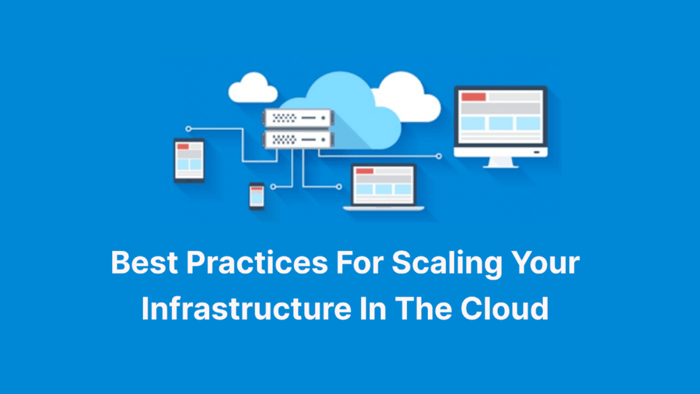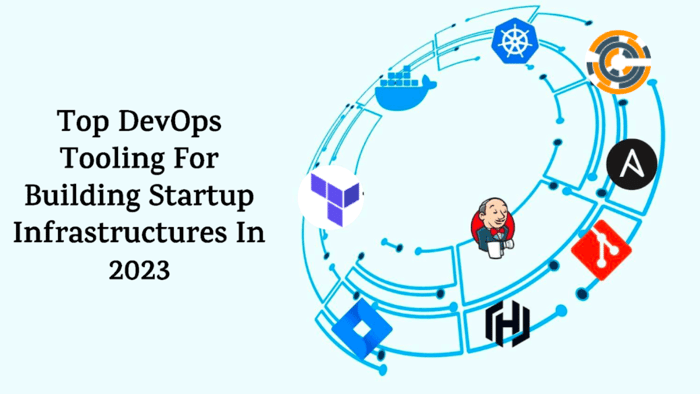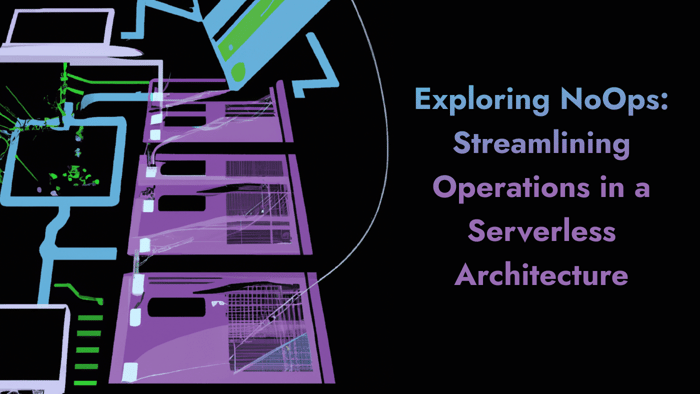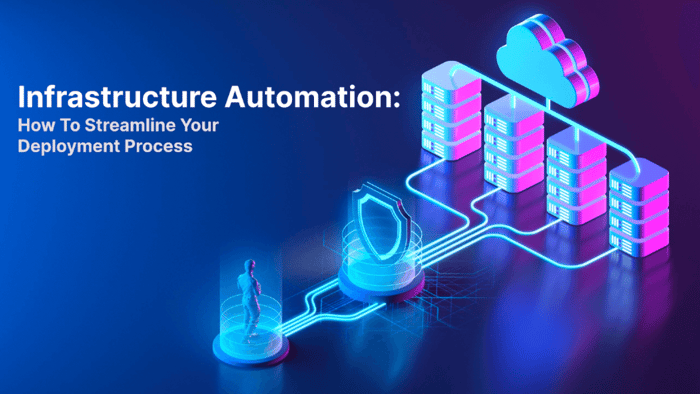Discover best practices to scale your infrastructure deployment in the cloud
Introduction
Once upon a time, in an IT department at a fast-growing company, a team of dedicated professionals faced a daunting challenge. Their organization's cloud infrastructure struggled to keep pace with rapidly growing demands, resulting in slow application performance, frustrated users, and skyrocketing costs. Realizing that their infrastructure needed to scale effectively to meet these demands, the team embarked on a quest to discover the best practices for scaling their cloud infrastructure.
In today's fast-paced digital world, organizations like the one in our story must scale their cloud infrastructure efficiently to accommodate ever-increasing workloads and user demands. Proper scaling can unlock numerous benefits, including cost optimization, performance improvements, and increased agility, enabling businesses to stay ahead of the competition.
This article will guide you on your journey to mastering the art of cloud infrastructure scaling, providing you with a roadmap of best practices to follow. We will cover essential topics such as capacity planning, autoscaling strategies, leveraging cloud-native services, and monitoring and optimization techniques. By the end of this article, you will be equipped with practical knowledge and actionable insights to help you effectively scale your cloud infrastructure, ensuring your organization's success in the face of growing demands.
Prerequisites
Before we dive into the best practices for scaling your infrastructure in the cloud, it's important to ensure that you have a solid foundation in the key concepts required to fully benefit from the insights shared in this article. Meeting these prerequisites will enable you to follow the content more effectively and apply the techniques discussed to your organization's cloud infrastructure.
The prerequisites for this article are as follows:
- Basic understanding of cloud computing concepts: To get the most out of this article, you should be familiar with the fundamentals of cloud computing. This includes an understanding of concepts such as Infrastructure as a Service (IaaS), Platform as a Service (PaaS), and Software as a Service (SaaS), as well as the various deployment models (public, private, and hybrid cloud).
- Familiarity with the fundamentals of cloud infrastructure management: A grasp of the essentials of managing cloud infrastructure is crucial for successfully implementing the best practices discussed in this article. You should be acquainted with key aspects of cloud infrastructure, such as virtual machines, storage, networking, and security, and have some experience with popular cloud platforms like Amazon Web Services (AWS), Microsoft Azure, or Google Cloud Platform (GCP).
If you're new to these concepts or need a refresher, it is advisable you review relevant resources and tutorials before proceeding with this article. By ensuring that you meet these prerequisites, you'll be well-prepared to follow through with this article and confidently scale your infrastructure in the cloud.
Planning and Assessing Your Cloud Infrastructure
Effective scaling of cloud infrastructure begins with proper planning and assessment. Taking the time to carefully evaluate your current infrastructure and anticipate future needs is essential for ensuring that your cloud resources are optimized for growth, performance, and cost-efficiency.
The following best practices will help guide your planning and assessment process:
- Anticipate future needs: Consider both short-term and long-term requirements when planning your cloud infrastructure. Account for factors such as business growth, seasonality, and the introduction of new applications or services. This proactive approach enables you to make informed decisions about scaling your resources to meet evolving demands.
- Right-size resources: Carefully analyze your existing cloud resources to ensure they are appropriately sized for your needs. This involves finding the right balance between resource allocation and utilization, avoiding over-provisioning, which can lead to unnecessary costs, and under-provisioning, which can result in performance issues.
- Monitor usage: Regularly monitor the usage patterns of your cloud infrastructure, including CPU, memory, storage, and network utilization. This data helps you identify trends, detect inefficiencies, and make informed decisions about when and how to scale your resources.
- Performance testing and load testing: These testing methodologies play a crucial role in identifying potential bottlenecks in your cloud infrastructure. Performance testing evaluates the responsiveness and stability of your applications and services under varying workloads, while load testing simulates real-world user traffic to determine how your infrastructure handles increased demand. By conducting regular performance and load testing, you can uncover issues that may impede scaling and proactively address them before they impact your users and business operations.
Planning and assessing is a vital step in scaling your resources effectively to ensure that your cloud infrastructure is well-prepared to adapt to your organization's evolving needs, delivering the performance, reliability, and cost-efficiency required for success in today's competitive landscape.
Implementing Autoscaling for Elastic Infrastructure
Autoscaling is a key mechanism in cloud infrastructure scaling that allows resources to automatically adjust based on real-time demand. By dynamically adding or removing resources in response to changing workloads, autoscaling helps maintain optimal performance, ensures high availability, and prevents unnecessary costs associated with over-provisioning.
There are several autoscaling strategies to consider when implementing elastic infrastructure:
- Horizontal scaling: This approach involves adding or removing instances (e.g., virtual machines) to accommodate changes in demand. Horizontal scaling is particularly effective for applications that can be distributed across multiple instances, such as web servers and microservices.
- Vertical scaling: Vertical scaling entails increasing or decreasing the capacity of individual instances, such as by adding more CPU, memory, or storage. While this method can be more cost-effective than horizontal scaling for certain workloads, it may also be limited by the maximum capacity of a single instance.
- Scheduled scaling: Scheduled scaling adjusts resources based on pre-defined schedules and anticipated demand fluctuations. This strategy is well-suited for workloads with predictable patterns, such as seasonal traffic spikes or nightly batch processing tasks.
To implement autoscaling, you'll need to configure autoscaling rules and policies in your cloud platform of choice. Here's a brief overview of how to do this in popular cloud platforms:
- AWS: You can use Amazon EC2 Auto Scaling to create scaling policies based on CloudWatch metrics, such as CPU utilization or network traffic. You can also define custom metrics for more granular control over scaling decisions.
- Azure: You can leverage Azure Virtual Machine Scale Sets and configure autoscaling rules based on built-in or custom metrics. You can define scale-in and scale-out rules, as well as set instance limits to control costs.
- Google Cloud: You can implement autoscaling with Google Cloud's Managed Instance Groups, using Stackdriver Monitoring metrics to drive scaling decisions. You can also configure custom autoscaling policies based on your specific workload requirements.
You can create a more elastic, responsive, and cost-effective cloud environment that scales seamlessly with your organization's needs by implementing autoscaling strategies tailored to your workloads and infrastructure.
Leveraging Cloud-Native Services and Architectures
Embracing cloud-native services and architectures is a powerful approach to scaling your infrastructure effectively in the cloud. These services and architectures are designed from the ground up to take full advantage of the cloud's inherent elasticity, resilience, and distributed nature, making them ideal for handling fluctuating workloads and facilitating rapid scaling.
Key cloud-native design practices include:
- Microservices: This architectural pattern breaks applications into smaller, independent components that can be developed, deployed, and scaled independently. By decoupling your services, you can scale each component based on its specific needs, improving resource utilization and reducing bottlenecks.
- Serverless computing: Serverless architectures allow you to build and deploy applications without managing the underlying infrastructure. This approach simplifies scaling by automatically allocating resources in response to demand, only charging for the compute resources used during execution.
- Containerization: Containers package applications and their dependencies into lightweight, portable units that can be deployed and scaled across various environments. By using container orchestration tools like Kubernetes, you can automate the deployment, scaling, and management of containerized applications.
Major cloud platforms offer a wide range of cloud-native services to help scale your infrastructure:
- AWS: Amazon offers services such as Lambda for serverless computing, Elastic Container Service (ECS) and Elastic Kubernetes Service (EKS) for container orchestration and API Gateway for managing microservices.
- Azure: Microsoft provides Azure Functions for serverless computing, Azure Kubernetes Service (AKS) for container orchestration, and Azure API Management for microservices management.
- Google Cloud: Google's cloud platform features Cloud Functions for serverless computing, Google Kubernetes Engine (GKE) for container orchestration, and Cloud Endpoints for microservices management.
By leveraging cloud-native services and architectures, you can build a scalable, resilient, and cost-effective cloud infrastructure that adapts seamlessly to your organization's evolving needs, empowering you to focus on delivering value and innovation rather than managing infrastructure.
Monitoring and Optimizing Your Cloud Infrastructure
Continuous monitoring and optimization are crucial components of effectively scaling your cloud infrastructure. By keeping a close eye on the performance and resource utilization of your infrastructure, you can quickly identify and resolve issues, optimize resource allocation, and ensure that your environment is running at peak efficiency.
Key monitoring and logging tools for tracking infrastructure performance include:
- Prometheus: An open-source monitoring system and time-series database, Prometheus is designed for reliability and scalability, making it well-suited for monitoring cloud-native applications and infrastructure. It provides powerful querying capabilities and integrates with visualization tools like Grafana for enhanced data analysis.
- ELK Stack: Comprised of Elasticsearch, Logstash, and Kibana, the ELK Stack is a popular open-source solution for centralizing, processing and visualizing logs and metrics from various sources. It helps you gain insights into infrastructure performance, track application errors, and detect anomalies.
- Datadog: A cloud monitoring platform that offers real-time visibility into your infrastructure, Datadog enables you to monitor metrics, traces, and logs across your entire stack. With built-in integrations for popular cloud platforms and services, it simplifies monitoring and alerting for large-scale environments.
To optimize your cloud infrastructure using insights from monitoring and logging, consider the following strategies:
- Analyze performance trends and resource utilization patterns to identify potential bottlenecks or underutilized resources. Adjust resource allocation to better match demand and improve efficiency.
- Set up alerts and automated responses for critical performance metrics, such as high CPU or memory usage, to ensure rapid issue resolution and minimize downtime.
- Regularly review logs and metrics to detect anomalies or deviations from expected behavior, which may indicate misconfigurations, security incidents, or performance issues.
By monitoring and optimizing your cloud infrastructure, you can ensure that your environment is continually adapting to your organization's needs, maximizing performance, and minimizing costs. This proactive approach will help you stay ahead of potential issues, enabling seamless scaling and a robust, high-performing cloud infrastructure.
Securing Your Cloud Infrastructure
As you scale your infrastructure in the cloud, it is crucial to prioritize security to protect your applications, data, and users from potential threats. Implementing robust security measures ensures that your growing infrastructure remains resilient against cyber attacks and reduces the risk of breaches or downtime. Here are some key practices to help secure your cloud infrastructure:
- Data encryption: Encrypt your data both at rest and in transit to protect sensitive information from unauthorized access. To safeguard your data from eavesdropping, tampering, or data leakage, use strong encryption algorithms and key management tools like AWS Key Management Service (KMS), Azure Key Vault, Google Cloud Key Management Service (KMS) or HashiCorp Vault.
- Identity and access management (IAM): Implement a robust IAM strategy to control who has access to your cloud resources. Use the principle of least privilege, granting users and applications the minimum access necessary to perform their tasks. Implement multi-factor authentication (MFA) to add an extra layer of security for user accounts. You can also explore tools like AWS Identity and Access Management (IAM), Azure Active Directory, Google Cloud Identity or Okta Identity Cloud.
- Network security: Design a secure network architecture by segmenting your cloud environment and isolating critical resources using virtual private networks (VPNs), virtual private clouds (VPCs), and security groups. Employ firewalls and intrusion detection/prevention systems (IDPS) like AWS Security Groups and Network Access Control Lists (NACLs), Azure Network Security Groups (NSGs), Google Cloud Firewall Rules or Cloudflare Web Application Firewall (WAF) to monitor and control traffic to and from your infrastructure.
- Vulnerability management: Regularly scan your cloud infrastructure for vulnerabilities and apply patches or updates as needed. Keep your software and libraries up-to-date to mitigate known security risks and minimize the attack surface. You can use tools like AWS Inspector, Azure Security Center, Google Cloud Security Scanner or Tenable.io to monitor vulnerabilities.
- Compliance and governance: Establish and enforce security policies, standards, and guidelines to ensure compliance with industry regulations and best practices. Conduct regular security audits and assessments to identify areas for improvement and ensure ongoing adherence to security requirements. You can use tools like AWS Config, Azure Policy or Google Cloud Asset Inventory.
By adopting these security best practices as you scale your cloud infrastructure, you can build a robust, resilient environment that safeguards your organization's valuable assets and maintains the trust of your users and customers.
Conclusion
In this article, we've discussed best practices for scaling cloud infrastructure, such as planning, implementing autoscaling, leveraging cloud-native services, and monitoring and optimization. Applying these strategies will help maintain a scalable, resilient, and cost-effective cloud infrastructure for you.
By following these best practices while committing to continuous learning, you can build a robust, scalable cloud infrastructure that supports your organization's growth and innovation. Stay current with evolving cloud technologies and practices to maximize efficiency and performance. Implement and adapt these best practices in your cloud scaling efforts, learn from your experiences, and refine your approach as needed.
So, don't wait – take the first step today and begin implementing these best practices to transform your cloud infrastructure and achieve the best in the rapidly evolving world of cloud computing.
Akava would love to help your organization adapt, evolve and innovate your modernization initiatives. If you’re looking to discuss, strategize or implement any of these processes, reach out to [email protected] and reference this post.









